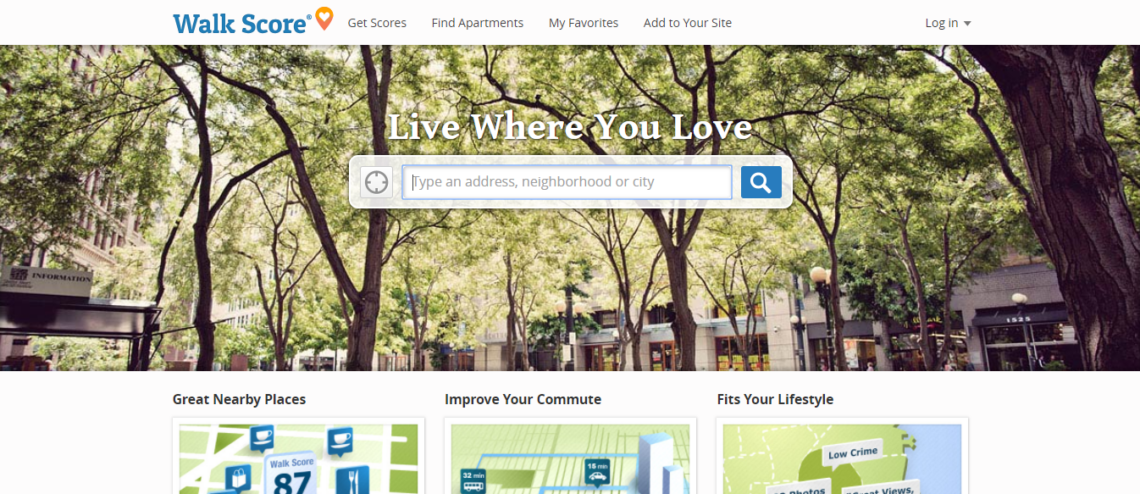Walk Score Rates The Walkability of Your Community
CREtech Blog

We all know how Americans are increasingly preferring live/work/play situations that don’t require cars or commuting. Walk Score is taking the lead with a platform that measures and scores the walkability of any community through its website and mobile apps (it also offers apartment search tools). it features a nationwide, public access walkability index that assigns a numerical score to any address in the United States, Canada and Australia.
Walk Score, based in Seattle, was founded in July 2007. In 2014, it was bought by the residential real estate company Redfin. The score is becoming increasingly important to buyers and renters as well as investors, developers and marketers.
It supports its position with the following statistics:
The average resident of a walkable neighborhood weighs 6-10 pounds less than someone who lives in a sprawling neighborhood.
87% of CO2 emissions are from burning fossil fuels.
Cars are the second largest household expense in the U.S.
Walkability is associated with higher levels of arts organizations, creativity, and civic engagement.
Walk Score is a number between 0 and 100 that measures the walkability of any address in any zip code (there are also scores for public transit and bikes):
Walk Score uses sources such as Google, Education.com, Open Street Map, Localese, and the U.S. Census. It also considers places added by the Walk Score user community. The Walk Score methodology was developed with the Walk Score advisory board and has been validated by leading academic researchers.
Here are the 10 cities with the most walkable neighborhoods in the U.S. in 2017, according to Walk Score:
New York. Walk Score: 89.2
San Francisco. Walk Score: 86.0
Boston. Walk Score: 80.9
Miami. Walk Score: 79.2
Philadelphia. Walk Score: 79.0
Chicago. Walk Score: 77.8
Washington, D.C. Walk Score: 77.3
Seattle: Walk Score 73.1
Oakland. Walk Score: 72.0
Long Beach. 69.9
This trend is not meant only for urban environments -- the suburbs are getting on board as well. At the 2016 Urban Land Institute (ULI) Fall Meeting in Dallas, panelists agreed that the American suburbs are evolving into more walkable, sustainable places that rival urban locations. The speakers agreed that the suburbs will increasingly look more like urban centers in the decades to come.
Click here to find out more about Walk Score.
